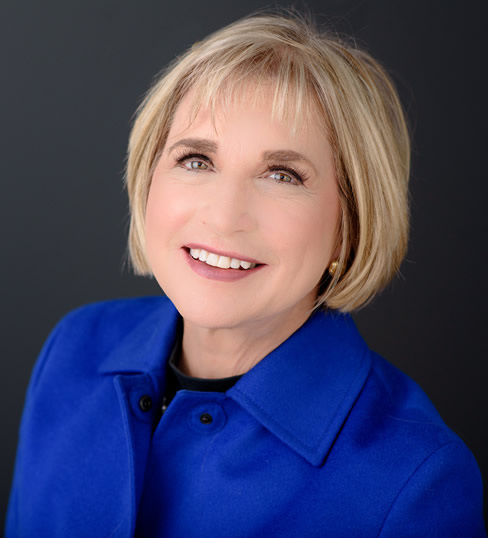This has been a year of adjustment for the reverse mortgage industry, particularly as the dust settles from a lender bankruptcy and several mergers and acquisitions. The spike in mortgage rates has been a pronounced challenge for the reverse mortgage industry.
The 10-year Constant Maturity Treasury (CMT) index from August 22-28 is expected to be 4.25, an increase of 18 basis points that will result in lower principal limit factors (PLFs) for Home Equity Conversion Mortgage (HECM) loans. To get an idea about how this spike could impact the business this week and potentially beyond, RMD interviewed several reverse mortgage subject matter experts.
Qualifying challenges, control
The rate movements could make it more difficult for borrowers to qualify for a reverse mortgage, said John Lunde, president of Reverse Market Insight (RMI).
“The movement in the 10-year over the past 18 months has been truly incredible,” Lunde said. “Before that time, we were seeing loan scenarios that could conceivably be at or close to the maximum principal limit factors for borrowers, as the 10-year in the 1-1.5% range allowed for loan margins in the 1.5-2% range that still provided solid loan sale revenue with discount margins in the 30-40 basis point range.”
This week, borrowers are likely to see expected rates of 6.25-6.75%, he said, due to discount margins in the 100+ basis points range and a “dramatically higher” 10-year CMT.

“That makes it much tougher to qualify for borrowers with existing debt, and tougher to convince borrowers that upfront fees of 2-4% of home value are worth it when the fees haven’t gone down but the cash-available benefit has,” Lunde said. “But even though it’s hard, originators in the industry need just to forget or ignore all of that as best they can because it’s simply out of our control.”
The lack of control Lunde alluded to is an idea he shares with Shelley Giordano, director of enterprise integration at Mutual of Omaha Mortgage. There is still a value proposition for the right borrower with current rates, she explained.
“I would just say that, in general, this market confirms that one should never be lulled into relying on HECM-to-HECM refinances as some lenders tended to do in the recent past,” she said. “Our top producers engage in prospecting activities even when easy refi loans are coming in the door. Also, our top LOs embraced playing in a completely different customer base than that of the classic house-rich/cash-poor [profile].”
All that being said, retirees who have assets to protect could still benefit from lower PLFs, Giordano explained.
“Although a HECM line of credit may start smaller, higher rates can help the client see every month how fast the credit limit will grow when they may need it, not now, but in the future.”
The PLF/LTV difference
There’s a possibility that the current environment could make clearer the potential value proposition of a reverse mortgage under the right circumstances according to Dan Hultquist, industry educator and author of reference guide Understanding Reverse.
“On one hand, when rates rise, the HECM reverse mortgage looks more attractive by comparison to the alternatives,” he said. “For example, nobody wants to look at a traditional cash-out refinance when their current 3% rate would move to 7%. However, they may be willing to accept a higher rate in exchange for no required monthly principal and interest mortgage payment. On the other hand, few borrowers seem happy with the lower principal limits today’s HECM is offering.”

In a conversation with a traditional/forward mortgage professional this past weekend, Hultquist explained how PLFs operate similarly to loan-to-values (LTVs) under traditional mortgage lending, but the reasoning behind the reverse industry’s use of PLFs stems from the idea that “PLFs are driven, in part, by long-term interest rates,” Hultquist said. “I continued by clarifying that when the weekly average 10-year CMT is high, new applicants for HECM reverse mortgages qualify for less money.”
The forward LO observed, however, that the 10-year CMT has been high in the past with what appeared to be a negligible impact on FHA-backed reverse mortgage volume.
“He’s partly right,” Hultquist said. “The 10-year CMT on Thursday, August 17 was the highest we’ve seen since November 2007 – a time when HECM volume was growing.”
A value proposition remains
But other economic circumstances beyond rates during that time helped influence demand for the product, he said.
“So, let’s not blame interest rates for low industry volume,” Hultquist said. “If you strip away HECM-to-HECM refinance volume in 2022, HECM endorsements have been weak since 2009, even when the 10-year CMT dropped to nearly 0.50% in August of 2020.”
Despite these larger challenges, Hultquist says that great opportunities still exist in the reverse mortgage business today.
“Demographics are in our favor, and some loan originators are bucking the trend by working with strong referral partnerships,” he said.

Giordano agreed about the potential for opportunity in the current climate.
“Financially stable clients with lower LTV versus home value can still qualify and establish greater discretionary cash flow by eliminating mandatory mortgage payments,” she said. “Now having fewer fixed expenses, the retiree can reduce forced draws against the portfolio at inopportune times. And there is always the benefit of establishing a baseline floor of tax-free cash flow that helps the retiree match expenses to reliable inflow.”
Harder work may be required on the part of originators, Giordano said, but that also means that the utility of home equity can potentially be communicated to a wider audience. Like she and Hultquist, Lunde says that originators would do well to focus on the value a reverse mortgage loan can create for a borrower.
“Guaranteed access to a flexible line of credit is a very good thing in the environment we find ourselves in, particularly for our borrowers who have more limited options to grow their cash flow than younger parts of the population,” Lunde said. “Locking in that line of credit now is a good thing because interest rates can still go higher, and that presents a danger to fence sitters for our product.”
Home prices could also decline, but the potential for a HECM to aid in preparedness is something that originators can cite for the right qualifying borrower, Lunde said.





